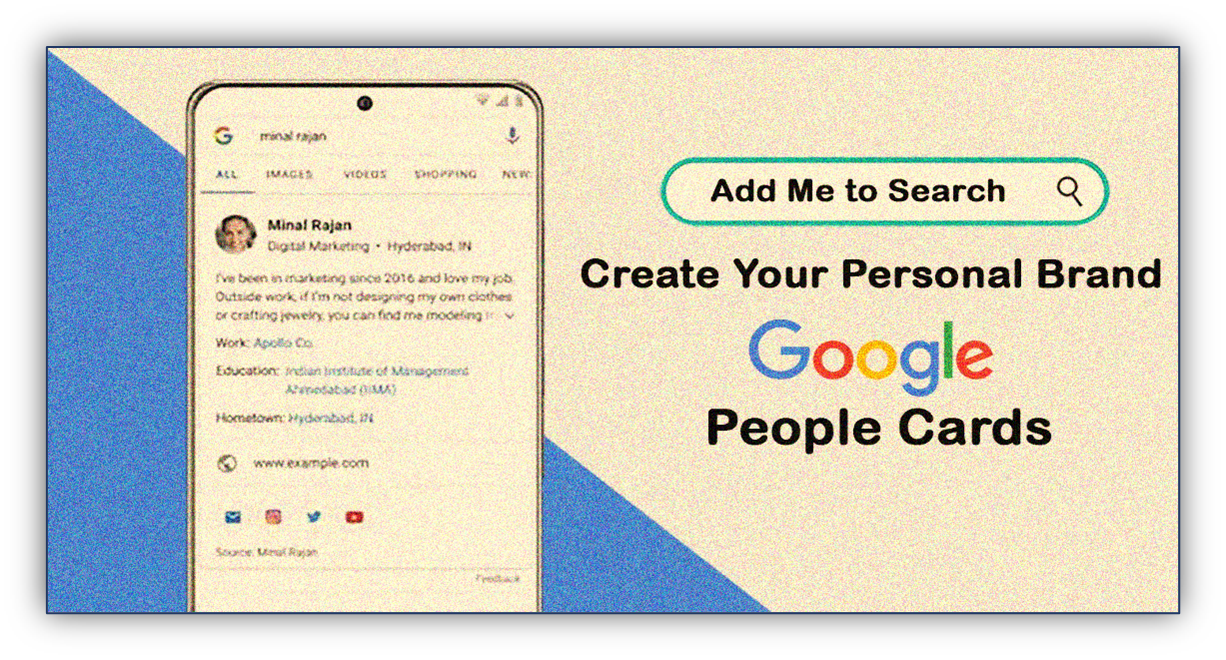- September 27, 2023

Backend technologies play a vital role in the functioning of web applications, providing server-side logic, data processing, and database administration. In the dynamic world of web development in 2023, choosing the right backend technology stack is crucial for creating reliable, scalable, and effective online apps. This comprehensive tutorial covers the 10 essential backend technologies that every web developer should consider in detail.
1. Node.js
2. Ruby on Rails
3.Python
4. Java
5. PHP
6. Express.js
7. Databases encompass both SQL and NoSQL technologies.
8. RESTful APIs
9. GraphQL
10. Serverless Computing
- September 25, 2023

Do you have some fabulous new clothes you’re excited to show the world? You’ll snap a pic and share it on your social media. Or maybe you’ve received a fancy new product, and you make an unboxing video for your YouTube channel? Whether you realize it or not, both examples are user-generated content (UGC).
Not sure yet? No worries, we’ve got you covered. In this article, you’ll find out what user-generated content is, and more:
- Discover the perks of using UGC in your campaigns,
- See how both big and small brands nail UGC,
- Get practical tips to boost engagement and conversions for your brand through user-generated content.
What is user-generated content?
UGCs, or user-generated content, refer to unique and brand-specific content created by customers and shared on various social media platforms and other channels. What Is A UGC Creator? UGC creators are individuals or customers who actively participate in generating this content, which takes various forms, such as captivating images, engaging videos, insightful reviews, compelling testimonials, and even thought-provoking podcasts.
Why is user-generated content important?
User-generated content (UGC) is crucial in today’s digital landscape for a bunch of reasons:
- Real and Genuine: UGC is created by actual users, not brands or marketers, which makes it super authentic. People often trust recommendations and reviews from their peers more than traditional ads.
- Engaging and Community-Building: UGC connects with the audience on a deeper level and fosters a sense of belonging. When brands share or feature user content, users feel valued and part of a community.
- Diverse Perspectives: UGC brings diverse perspectives and experiences, enriching the content ecosystem. This diversity can attract a wider audience and provide a more comprehensive view of products, services, or topics.
- Cost-Friendly: Creating UGC is usually more cost-effective than producing branded content. Brands can tap into their user base to generate content without spending a fortune on production.
- SEO Boost: User-generated content often includes keywords and phrases that can improve a brand’s search engine rankings. It can also increase the content associated with a brand, potentially driving more organic traffic.
- Feedback and Improvement: UGC can provide valuable feedback to brands. Reviews, comments, and discussions can highlight areas for improvement and help businesses refine their offerings.
- Proof of Popularity: UGC is social proof of a brand’s credibility and popularity. Positive reviews and user testimonials can significantly influence potential customers’ decisions.

Types of user-generated content
There are different types of user-generated content, like:
- Reviews and Ratings: Users share their thoughts and experiences about products, services, or businesses. You can find these on platforms like Yelp, Amazon, or TripAdvisor.
- User-Generated Videos: Users create and share videos on platforms like YouTube, TikTok, and Instagram. These videos can include product reviews, tutorials, or just fun content related to a brand.
- Social Media Posts: Users make posts on social media platforms like Facebook, Twitter, and Instagram, often using hashtags or mentioning products they love. Additionally, incorporating professional headshots using AI technology can personalize their profiles and increase engagement.
- Blogs and Articles: Some users have their blogs or write articles for websites, where they discuss topics they’re interested in or share their experiences with products and services.
- Photos and Images: Users upload photos and images on platforms like Pinterest and Instagram, showing how they use products or interact with a brand.
- Forums and Discussion Boards: Users participate in online forums and discussion boards to ask questions, share knowledge, and discuss various topics.
- Contests and Challenges: Brands create contests and challenges encouraging users to create content, like artwork or creative photos.

Ways to Encourage User-Generated Content
To encourage user-generated content, brands can use different strategies:
- Create Shareable Content: Create a poster that reflects your content that people love to share and be inspired by.
However, you can also create attractive brochures for marketing using a brochure maker. Make a brochure that resonates with your audience save time and effort while creating shareable posters and brochures that inspire and engage.
- Contests and Challenges: Run fun contests or challenges with cool prizes or recognition to motivate users to join in.
- Engage with Users: Interact with user-generated content, appreciate their contributions, and build a sense of community.
- Hashtags and Mentions: Promote specific hashtags or ask users to mention your brand in their posts.
- Feature UGC: Show off user-generated content on your website, social media, or marketing materials. This shows appreciation and encourages others to get involved.
- Offer Rewards: Give users exclusive discounts, early access, or other perks as a thank-you for creating content.
- Provide Clear Guidelines: If you want users to create content in a specific way, give them clear guidelines and examples.
- Leverage Influencers: Partner with influencers who can create user-generated content and promote your brand to their followers.
- User Testimonials: Encourage happy customers to share testimonials that you can use on your website and marketing materials.
- Create a Community: Build an online community or forum where users can chat and share their experiences about your brand or products.
By using these strategies, brands can harness the power of user-generated content to boost authenticity, engagement, and trust with their audience.
Incorporating Social Media Integration for Increased Engagement
Integrating social media into your online presence is vital for boosting engagement and expanding your reach. Integrating social media into your online presence, especially in the context of saas funding, is vital for boosting engagement and expanding your reach. Let’s explore the significance of this practice and discover effective strategies to implement it.
Why is Social Media Integration Important for Increased Engagement?
Social media platforms have billions of active users, making them a goldmine for reaching a larger audience. Integrating your website or app with social media allows you to tap into this vast pool of potential users and customers. It also makes it easier for your existing audience to share, comment, and engage with your content, as they are already active on social media. Consider leveraging Facebook marketing services for even broader reach.
Social media integration with the right customer engagement software keeps your audience updated in real time, fostering immediacy and relevance for maintaining real interaction. Enrich your website or app with user-generated content from social media, like reviews, photos, and videos, for valuable insights and user participation. According to Statista, Facebook is the largest social networking platform with billions of active users. People are more likely to see content from sources they interact with, including friends and businesses. For example, if they are interacting with videos, they’ll see more videos on their feed.
In this way, businesses significantly increase their Facebook followers, when targeting their exact audience which improves the brand’s visibility. Linking these engagements using CTA’s to drive traffic to their websites is indeed a common approach among businesses.
Furthermore, social media integration positively impacts search engine optimization (SEO). Social media signals, such as shares and likes, can enhance your website’s search engine rankings, boosting online visibility. By embedding Instagram Reels on website can make businesses gain more traffic on their website.

Strategies for Social Media Integration
To effectively integrate social media into your online presence and boost engagement, consider these strategies:
- Add social sharing buttons on your website, blog, and content pages. This makes it easy for users to share your content on their social media profiles, expanding your reach.
- Enable users to log in or sign up using their social media accounts. This streamlines registration and provides valuable user data for your marketing efforts.
- Embed social media feeds or a widget displaying your latest posts on your website. This keeps your site updated with dynamic content from your social accounts.
- Cross-promote your website or app on social media and vice versa. Share links, updates, and exclusive content across platforms to encourage engagement.
- Encourage users to generate content related to your brand on social media. Share and showcase user-generated content on your website to foster community and authenticity.
- Utilize social media analytics tools to track engagement, reach, and audience behavior. Gain valuable insights into your social media integration strategy.
- Take advantage of plugins and integrations offered by social media platforms to enhance the user experience and keep visitors engaged on your site.
Following these strategies can effectively integrate social media and drive engagement.
Emerging Trends in eCommerce App Development: What to Expect
1. Augmented Reality (AR) and Virtual Reality (VR) Integration: In the world of eCommerce app development, integrating Augmented Reality (AR) and Virtual Reality (VR) is a hot trend that’s set to revolutionize the shopping experience. With AR, users can visualize products in their real environment using their device’s camera, helping them make smarter purchase decisions. On the other hand, VR creates immersive shopping environments where customers can explore products as if they were in a physical store. This incredible integration adds interactivity and engagement, especially in industries like fashion and furniture, by letting users try before they buy. The result? Increased sales and happier customers

2. Personalization and Customization Features: Personalization is crucial in eCommerce app development. With tons of user data and AI-powered algorithms, apps can create product recommendations, content, and offers that are just right for each user. Customization features let users design or customize products to fit their style and needs. These trends make the shopping experience more personal and relevant, boosting user engagement, satisfaction, and loyalty, and ultimately driving more sales and revenue.
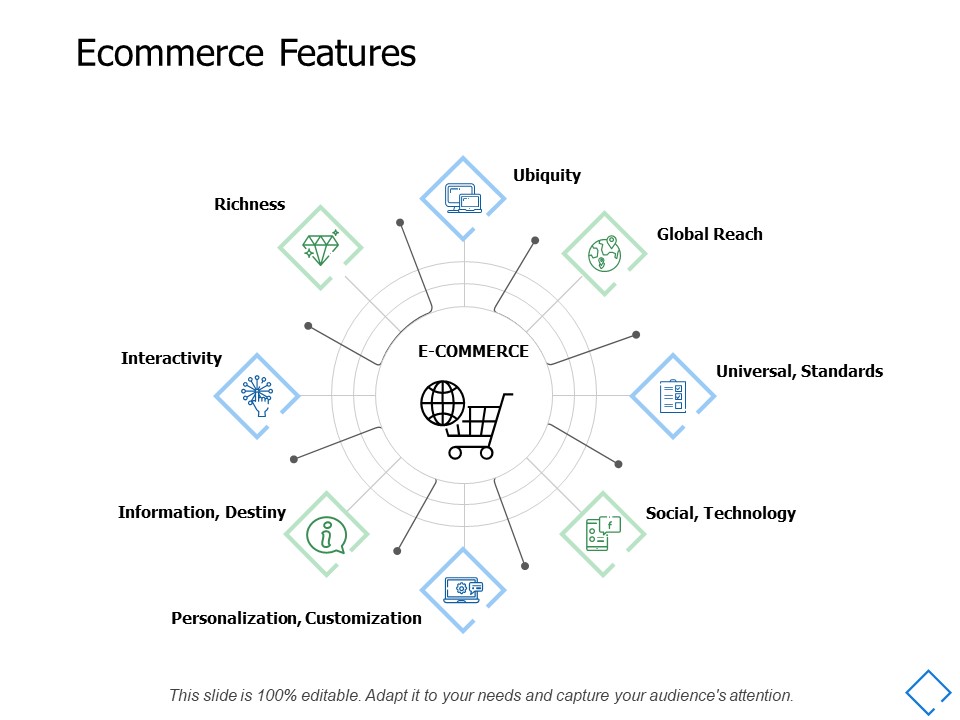
3. Voice Search and Voice-Activated Functions: Voice search and voice-activated features are gaining popularity in eCommerce apps, thanks to voice assistants like Amazon’s Alexa and Apple’s Siri. Now, users can search for products, place orders, and interact with the app using natural language commands. This hands-free approach simplifies shopping, especially when you’re busy cooking or driving. As voice recognition technology advances, we can expect more eCommerce apps to offer seamless voice-enabled experiences.

4. AI Chatbots and Virtual Assistants: AI-powered chatbots and virtual assistants are changing the game regarding customer support and engagement in eCommerce apps. These smart bots can handle all those regular customer questions, give killer product recommendations, help you track your orders, and even process transactions. They’re available 24/7, which means better customer service and quicker responses. And as AI tech gets even better, these virtual assistants will only keep getting more personalized and efficient, making your shopping experience top-notch.

5. Enhanced Payment and Security Solutions: In the continuously evolving world of eCommerce, ensuring secure and convenient payment methods is crucial. Exciting trends like digital wallets, contactless payments, and buy now, pay later (BNPL) options are emerging. These payment solutions make checkout easier and cater to different customer preferences. At the same time, apps integrate advanced security measures like biometric authentication and encryption to protect user data and financial information. This builds trust and confidence in online transactions. eCommerce apps will continue investing in these technologies to provide users a smooth and secure shopping experience.
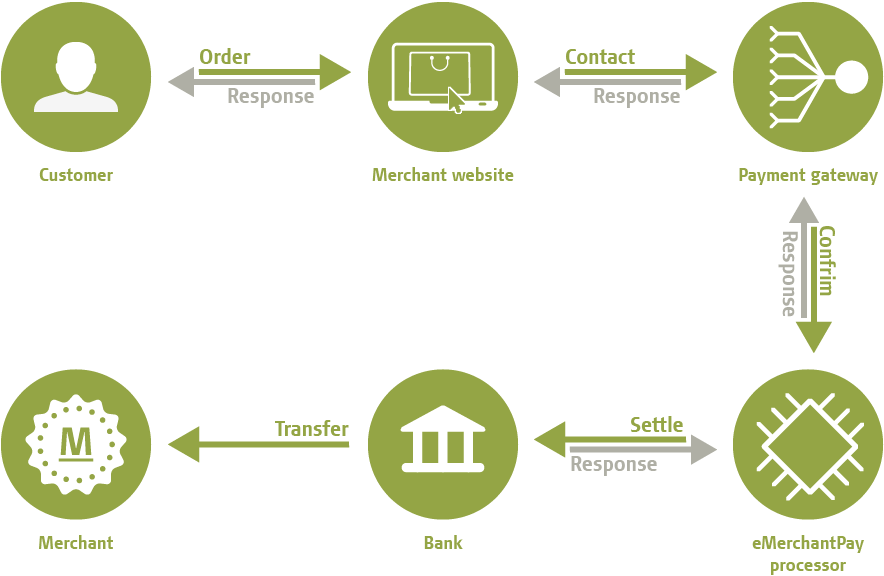
Conclusion
From augmented reality to voice search and AI-powered chatbots, the latest trends are totally changing the game in eCommerce app development. By integrating these cool technologies, you can amp up user engagement, satisfaction, and loyalty while driving more sales and revenue. Plus, with enhanced payment solutions and top-notch security measures, you can ensure smooth and secure transactions for an excellent shopping experience.
And guess what? As technology keeps advancing, we can expect even more mind-blowing features in eCommerce. If you aren’t experienced enough to follow such strategies, then consider consulting with social media marketing experts. Austin social media professionals, for example, can help you fine-tune your approach, optimize user engagement, and ensure a seamless integration of social media into your online presence.
So, businesses, don’t forget to keep an eye out for emerging trends and update your app development strategy to stay ahead of the competition. The result? An unbeatable user experience that your customers will adore, making your brand shine brighter than the rest!
- September 25, 2023

The iPhone 15 will be available for purchase starting on Friday. It includes new features such as an upgraded camera and display, an action button, and a transition from the Lightning charging cord to the universal standard USB-C.
- September 21, 2023

Jerome Pesenti, the former Vice President of AI at Meta, has unveiled “Sizzle,” a groundbreaking AI-powered learning app that aims to revolutionize the way students approach learning.
Sizzle sets itself apart from typical AI-powered learning apps, which often facilitate cheating by providing instant answers without promoting real understanding. Instead, Sizzle acts as a tutor chatbot, guiding students through each step of a problem and encouraging them to ask questions to enhance their comprehension of concepts.
The app primarily focuses on offering step-by-step answers to math equations and word problems. However, it has recently introduced four new features that enhance its functionality. These additions include a grading feature, step regeneration, the ability to view multiple answers to one problem, and the option to upload photos of assignments.
While Sizzle competes with math solver platforms like Photomath and Symbolab, it distinguishes itself by extending its capabilities to solve word problems in subjects such as physics, chemistry, and biology. It caters to students across different educational levels, from middle school and high school to AP and college.
Jerome Pesenti’s motivation behind Sizzle is to harness AI’s potential to assist both students and non-students, irrespective of their backgrounds or resource availability. Sizzle aims to make a positive impact on people’s lives by transforming the way they learn.
Sizzle’s AI capabilities draw from various sources, including third-party language models like OpenAI, and its accuracy rate stands at an impressive 90%. Since its August launch, Sizzle has garnered over 20,000 downloads and boasts an average rating of 4.6 stars on both the App Store and Google Play store.
Also Read: Instasupersave Alternative
Crucially, Sizzle differs from other learning apps in its commitment to providing core features for free. While the company plans to introduce premium offerings and in-app purchases in the future, the current version of the app, which enables step-by-step problem-solving, will remain accessible to all.
Sizzle recently secured $7.5 million in seed funding from investors such as Owl Ventures, 8VC, and FrenchFounders. This funding will support the expansion of Sizzle’s team and further product development, with additional features expected in the coming months. Sizzle is poised to reshape the landscape of AI-powered learning, promoting understanding and engagement among students.
- September 19, 2023

- September 18, 2023
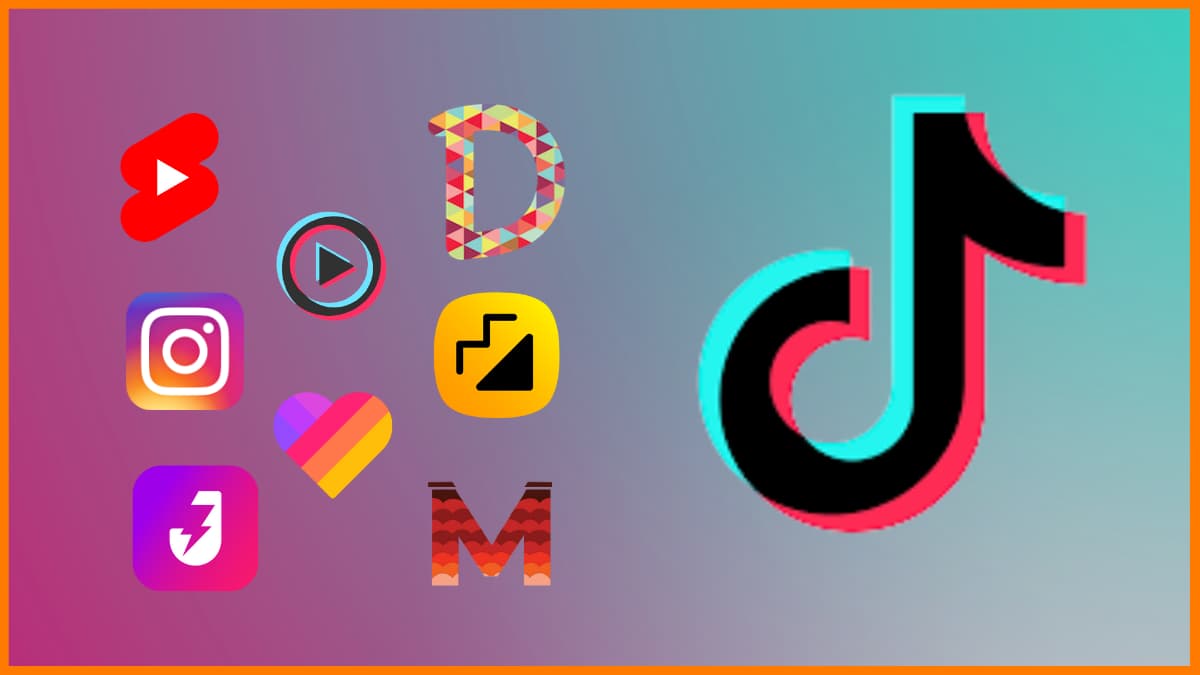
One platform has taken the world by storm in the quicksand of social networking and digital media, forever altering the way we consume and produce information. With its rapid growth, TikTok has established itself as the hub of short-form video content, enthralling consumers across all age groups and demographics. In this investigation, we look into the TikTok phenomenon in an effort to comprehend its astonishing rise, the distinctive characteristics that characterize its success, and the larger implications it holds for the future of online communication and entertainment. Come along with us as we set out on a quest to comprehend TikTok’s meteoric rise and the development of short-video content in the digital era.
TikTok’s Ripple Effect: Transforming Social Media and Culture
TikTok’s allure lies in its unique format. Unlike platforms like YouTube, it serves up bite-sized clips, typically no longer than a minute. These short, attention-grabbing videos are also long enough to leave viewers craving more, often resulting in hours spent on the app.
TikTok has become the go-to platform for expressing our love for food. When an intriguing new food item graces your “For You Page,” you might find yourself eager to try it. Consequently, TikTok has become a key marketing tool for countless companies. Take, for instance, the British brand ‘Little Moons,’ which saw a staggering 700% increase in sales in 2021, all thanks to TikTok promotion. Whether it’s passion fruit and mango or Belgian chocolate, viewers were clamoring to get their hands on these trendy treats. This phenomenon can be attributed, in part, to the “fear of missing out” on the latest food fads. In 2023, TikTok’s obsession with food continues, featuring everything from frozen string belts to all things pickled, like kimchi. The burning question on many viewers’ minds is: when will they get to savor fruit roll-ups wrapped in ice cream?
Dance Mania on TikTok
TikTok provides a platform for self-expression; one of its most popular avenues is dancing. Dance trends have propelled names like Charli D’Amelio to stardom. Under Charli’s influence, the “renegade” dance exploded in popularity in 2019, with everyone attempting to master its lightning-paced choreography. Since then, she has amassed over 100 million followers and a staggering net worth of $20 million at just 18 years old, according to Celebrity Net Worth. Numerous dance moves have resurfaced thanks to TikTok trends, ranging from the “reject” to “getting sturdy,” allowing Generation Z to shine. Whether it’s the creativity of the dances, the skills they foster, or simply the sense of community, TikTok’s influence has fueled a massive surge in dance appreciation.
TikTok has been a game-changer for emerging artists. Take RAYE, for example, whose career skyrocketed when her song landed on the platform. By the end of 2022, her track had reached number 1 on the UK charts and garnered 47 million streams on Spotify. It’s clear that featuring her music in “get ready with me” videos on TikTok thrust an independent artist into the spotlight. Whether users are remixing songs, creating sped-up versions, or simply crafting videos with a catchy soundtrack, TikTok continually propels artists’ careers. TikTok has reshaped the musical landscape, proving that it’s not just an app; it’s a cultural force driving change.
The Need for Alternatives
The need for alternatives to TikTok has grown increasingly urgent due to several pressing concerns. First and foremost is the apprehension of cultural manipulation by the Chinese government, as TikTok’s parent company, ByteDance, is based in China. This concern arises from the potential for censorship and surveillance, raising questions about data privacy and the spread of government-approved content. Additionally, the emergence of a digital monopoly, with TikTok dominating the short-form video market, has sparked concerns over market competition and the concentration of power in a single platform. Lastly, fostering alternative platforms is essential to provide artists and creators with more diverse and flexible avenues for expression, ensuring their work remains accessible even if TikTok were to face bans or restrictions in various regions. Diversifying the ecosystem not only promotes healthy competition but also safeguards against potential cultural and artistic homogenization.
10 Best TikTok Alternatives
1. Dubsmash
Dubsmash, a lip-syncing app that once enjoyed a moment of viral fame in 2015 alongside the now-defunct Vine, found itself facing a serious user retention challenge. The app allowed users to select audio tracks, such as rap songs or famous movie quotes, and create videos where they mimed the words. However, it lacked a built-in platform for users to share these videos. Unlike Instagram, which successfully evolved into a social network.
Dubsmash aims to foster a sense of opportunity by emphasizing the Explore feature, which focuses on discovering user accounts and their entire content library rather than individual videos. Although popular Dubsmash clips may garner tens of thousands of views, as opposed to the multi-million counts seen on TikTok’s top content, they still receive sufficient visibility to make creating Dubsmashes a worthwhile endeavor.
2. Byte
Byte is a mobile application that enables users to create and share six-second videos. Notably, one of its co-founders played a pivotal role in creating the beloved Vine app, making Byte somewhat of a spiritual successor to Vine, which was bid farewell nearly three years ago.
Furthermore, Byte has already attracted notable creators, including former Vine stars who have found success on TikTok, such as Chris Melberger, Joshdarnit, and Lance Stewart, indicating a promising trajectory for the platform with the potential for more influential creators to join in the future.
The user demographics on these platforms differ significantly. Byte has attracted several formerly renowned Vine stars, who have brought with them a penchant for poking fun at TikTok. The “Comedy” section on Byte has become a hub for TikTok-related humor, and content reminiscent of TikTok is not always warmly received. Byte’s organization of genres into dedicated “pages,” encompassing everything from comedy to pets and art, fosters an environment that encourages users to explore more innovative content.
3. Funimate
Funimate is your go-to solution for creating captivating motion designs and performing seamless video editing on your mobile App device. Widely regarded as one of the top video editors, it’s the choice of countless mobile users seeking an effective and user-friendly editing experience
Funimate is perfect for those who want to add unique effects and transitions to their videos. With a wide range of editing tools, it’s a favorite among content creators who want to take their short videos to the next level. Funimate offers a thriving community and the ability to collaborate with other users. Enhance your video creations with Funimate, the ultimate app for adding a touch of animation and excitement to your videos. With a plethora of engaging features, Funimate promises to infuse your films with vibrant and captivating elements.
4. Lomotif
Lomotif is the ultimate video editing and merging app that caters to all your multimedia needs. With Lomotif, you can effortlessly transform clips into captivating creations without breaking a sweat. Whether you’re crafting a personalized music video or combining images and videos from your camera roll, Lomotif has got you covered.
What sets Lomotif apart is its seamless integration of music into your video projects. By simply selecting your preferred media from your camera roll and adding music, you can effortlessly transform ordinary footage into mesmerizing music videos. Plus, your creations can enjoy extended exposure on the discovery page, reaching a wider audience.
Lomotif doesn’t stop at content creation; it’s also a platform for exploring videos from other talented creators. This app offers the unique flexibility of creating videos in both square and landscape formats, catering to your specific vision and style.
The cherry on top? Lomotif empowers you to easily share your masterpieces with the world. You can publish your beautifully merged and enhanced videos on popular social media platforms like Facebook, Instagram, Twitter, and more. So, unleash your creativity with Lomotif and make your mark in the digital world.
5. Cheez
Are you in search of an enticing TikTok alternative that not only satiates your appetite for short videos but also delivers a live, interactive, and thoroughly entertaining experience? Look no further than Cheez, the platform formerly known as LiveMe. Cheez effortlessly marries the best of short video content, exhilarating live streaming, and a plethora of interactive features, making it an ideal choice for both enthusiastic content creators and avid viewers alike. Whether you’re keen on participating in electrifying challenges, witnessing mesmerizing dance-offs, or simply relishing the excitement of live content, Cheez stands as a formidable contender. Say goodbye to the TikTok routine and embrace the exhilarating versatility that Cheez brings to the table, all with just a few taps on your screen!
6. Vigo
Cast your gaze towards Vigo Live, formerly known as Vigo Video, as it has seamlessly transitioned into a global epicenter for exceptionally talented creators. It not only beckons users to flaunt their diverse skill sets, whether in the realm of dance, comedy sketches, or other creative endeavors but also introduces an alluring twist with its live-streaming capabilities and ingenious virtual gifting system. This unique blend offers creators a dynamic and lucrative avenue to monetize their creative endeavors, setting Vigo Live apart as a top-tier TikTok alternative. If you’re an aspiring artist seeking a platform that enables your creative prowess to shine while unlocking innovative avenues for earning, Vigo Live emerges as the ultimate destination!
7. KWAI
KWAI, hailing from its origins in China, has skyrocketed to global stardom, captivating audiences worldwide with its impressive repertoire of video editing features, mesmerizing special effects, and an extensive library of artistic filters. If your heart resonates with the desire to craft visually stunning short videos, then KWAI beckons you with open arms as the TikTok alternative of your dreams. Here, you are empowered to create content that is nothing short of captivating, breaking free from the constraints of TikTok’s limitations. Bid adieu to the mundane and embrace the exhilarating potential of your creativity by joining the vibrant KWAI community today!
8. Likee
Rebranded as Likee from its former avatar as LIKE Video, this platform takes short video creation to a whole new level. It offers a vast array of special effects, melodious music tracks, and powerful editing tools, effectively transforming your content into a masterpiece. Likee goes a step further by fostering a sense of community through challenges and contests, ensuring that your creative journey is filled with excitement and engagement. If you’re in pursuit of a TikTok alternative that places creativity and interaction at its core, Likee emerges as the prime choice. Immerse yourself in a world of limitless possibilities and let your videos shine brilliantly with the enchanting allure of Likee!
9. Firework
For those weary of TikTok’s repetitive content, Firework strides in with a fresh perspective. This unique platform is not content with the status quo; instead, it emphasizes storytelling and narrative-driven content. Here, users are invited to craft short stories, embark on captivating vlogs, and create interactive videos that provide a cinematic and immersive experience. If you yearn for a TikTok alternative that compels you to unleash your inner storyteller, Firework is the answer to your creative aspirations. Bid farewell to the ordinary and embark on an enchanting journey of creative storytelling with Firework as your trusty companion!
10. VideoShow
If you’re a TikTok user who values having complete control over your video creations, VideoShow emerges as your quintessential alternative. This versatile video editing app offers an extensive repertoire of editing tools, an assortment of mesmerizing filters, and a palette of captivating effects. With VideoShow, you’re no longer constrained by TikTok’s limitations; you’re in the driver’s seat, steering your content in the direction of your unique style and vision. Embrace the unparalleled freedom of expression that VideoShow offers, and witness your short video creations soar to new heights, captivating audiences like never before!
Conclusion
Review key takeaways and insights
The rise of short-form video content, epitomized by TikTok, has reshaped the social media landscape and entertainment industry. TikTok’s meteoric popularity, especially among the 15-25 age group, has been fueled by its unique format of serving bite-sized, attention-grabbing videos. It has become a powerful marketing tool, influencing food trends and driving sales Additionally, TikTok has transformed the music Industry as well.
However, concerns over data privacy, censorship, and platform monopoly have led to a demand for TikTok alternatives. Several options, such as Dubsmash, Byte, Funimate, Lomotif, Cheez, Vigo, KWAI, Likee, Firework, and VideoShow, offer diverse alternatives for short video creation, catering to different creative preferences and fostering healthy competition in the market. These alternatives ensure that the short-form video ecosystem remains vibrant and accessible while addressing concerns about platform dominance and cultural manipulation.
Discuss the evolving landscape of short video platforms
The short video platform landscape has witnessed significant evolution, driven by shifting user preferences, technological innovations, and changing content consumption habits. TikTok emerged as the dominant player, thanks to its algorithm-driven content recommendations and creative tools. Established social media giants like Instagram, YouTube, and Snapchat have incorporated short video features to compete with TikTok, leveraging their vast user bases.
Niche platforms catering to specific interests have also gained traction, such as Triller for music and dance content and Vero for authentic social networking. Monetization opportunities for creators have expanded through ad revenue sharing, virtual gifts, and brand partnerships. E-commerce integration has become prominent, allowing users to shop directly from videos, notably in China.
However, regulatory challenges have arisen, with concerns about data privacy and content moderation leading to restrictions and bans in some regions. Emerging technologies like AR and VR promise to enhance short video content creation, while global expansion efforts aim to tap into diverse markets. Authentic user-generated content is a hallmark, along with an increasing focus on educational and how-to content. Talent discovery on these platforms has also become a powerful tool, enabling aspiring creators to launch successful careers. Overall, the short video platform landscape continues to evolve, adapting to the dynamic demands of users and creators worldwide.
Explore long-term content strategies beyond TikTok.
TikTok has made a significant impact with its short videos. However, for sustained success, it’s crucial to look beyond TikTok and adopt a long-term content strategy. Here are some effective strategies:
- Blogging: Consistently produce high-quality blog posts to establish your brand as an authority in your industry. Optimize for SEO and encourage social sharing to grow your audience. Consider enlisting the expertise of SEO consultants in Germany, Poland, Bulgaria, or others, to ensure your content ranks well in search engines.
- YouTube: Create informative videos to engage your audience on YouTube. Regular uploads and SEO optimization can help build a loyal subscriber base.
- Email Marketing: Build an email list and personalize content to nurture customer relationships over time.
- Podcasting: Start a podcast related to your niche and distribute it on popular platforms. It offers a unique way to engage with your audience.
- Social Media: Maintain a presence on multiple platforms, tailoring your content to each one’s style and audience preferences.
- Webinars and Live Events: Host webinars and live events to interact with your audience, promote your brand, and provide value.
In conclusion, a diverse, long-term content strategy that includes blogging, video, email marketing, podcasting, social media, and live events is essential for sustained growth in the digital landscape. Success is a marathon, not a sprint, and these strategies will help you stay competitive and engaged with your audience over time.
Also Read: Discover The Top 10 Omegle Alternatives For 2023 That Will Blow Your Mind!
- September 18, 2023
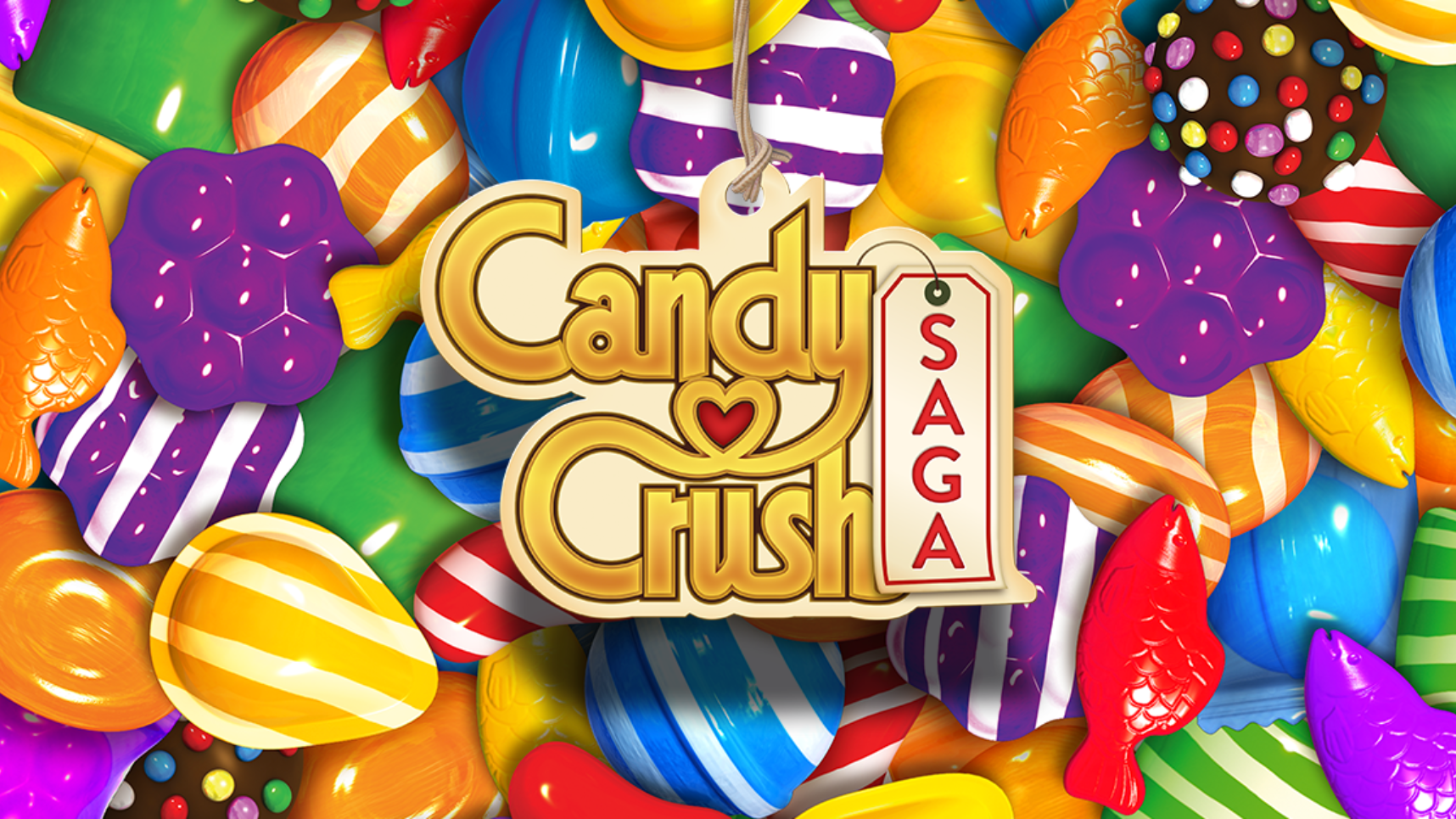
Candy Crush continues to be a successful and popular game in the smartphone industry, even years after its initial release.
Various apps, such as WhatsApp, Tinder, and TikTok, can captivate your attention, but Candy Crush has consistently proven to be highly addictive.
The colorful tile-matching puzzle game, which has been available on Apple and Google’s app stores for over a decade, continues to be enjoyed by 238 million people worldwide as a fun way to pass the time.
It has played a significant role in reshaping the concept of a “gamer”, with individuals ranging from a busy mother on her way to work to a teenager in their dimly lit bedroom
The majority of Candy Crush players are women, and its large number of players has contributed to its annual revenue of over $1 billion for several years.
Developer King has created over 14,000 levels, which have been completed by numerous dedicated fans, possibly providing entertainment during bus and train rides.
After completing the latest stages, they have to wait a few weeks for the next batch, hoping to avoid any existential crisis during the downtime.
The intervals between level releases may become even shorter in the future, due to the impact of generative AI on game development.
- September 18, 2023

Please ensure that your iPhone is compatible.
Every year, Apple excludes at least one iPhone from its update list, despite the importance of leaving no man behind for a good soldier.
This time is significant because one of the phones not included is the iPhone X, which was the first to remove the home button when it was released in 2017.
Additionally, the iPhone 8 and 8 Plus will not receive iOS 17, but they will continue to receive important security updates, just like the X.
If you are unsure about your iPhone model, you can check the model name in your phone’s settings under general/about to see if it is compatible with today’s changes.




